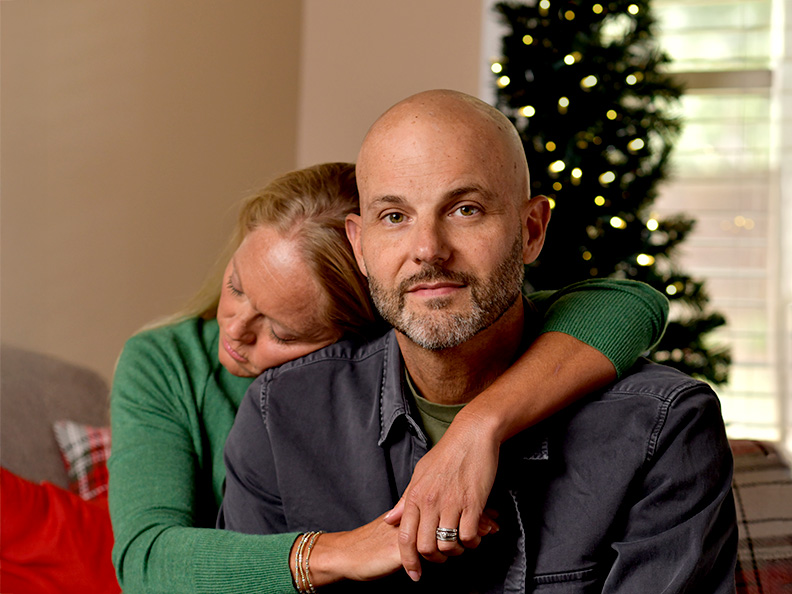Your gift is 100% tax deductible
Radiation Therapy for Thymus Cancer
Radiation therapy is the use of high-energy radiation in the form of x-rays or radioactive particles to kill cancer cells.
When is radiation therapy used for thymus tumors?
Radiation therapy can be used in many ways to treat thymus tumors (thymomas and thymic carcinomas):
- It is often used after surgery if the doctor thinks that some cancer was left behind.
- Even when no visible tumor was left after surgery, radiation therapy is sometimes given to try to kill any small areas of cancer that might have been left behind because they were too small to see. This is called adjuvant therapy. It's given to nearly all people with stage II, III, and IV thymomas or with thymic carcinomas.
- Some people who can’t have surgery might get radiation therapy alone. Sometimes chemotherapy is given with radiation to help it work better.
- For people with advanced disease, radiation therapy can sometimes help ease (palliate) symptoms from the cancer such as shortness of breath, pain, bleeding, or trouble swallowing.
How is radiation therapy given?
The type of radiation therapy used most often to treat thymic cancer is external beam radiation therapy (EBRT). This type of radiation therapy uses x-rays from a machine outside the person’s body to kill cancer cells.
Advanced forms of EBRT that allow the radiation beams to be aimed more precisely, such as 3D conformal RT (3D-CRT), intensity-modulated RT (IMRT) are often used to treat these tumors. Newer forms of radiation therapy might also be options in some centers. (See What's New in Thymus Cancer Research?)
Before your treatments start, the treatment team will take careful measurements to determine the correct angles for aiming the radiation beams and the proper dose of radiation. They will also do special CT scans to help plan your treatments.
The treatment is much like getting an x-ray, but the radiation is more intense. The procedure doesn't hurt, but it can cause side effects (see below). Each treatment lasts only a few minutes, although the setup time — getting you into place for treatment — usually takes longer. Most often, radiation treatments are given 5 days a week for several weeks.
Possible side effects of radiation therapy for thymus tumors
Common side effects of radiation therapy include:
- Fatigue
- Skin changes where the radiation passes through, such as redness and blistering
- Nausea and vomiting
- Irritation of the esophagus (the tube between the mouth and stomach), which could cause painful swallowing and eating problems
- Poor appetite and weight loss
- Diarrhea (if the abdomen/belly or pelvis is treated)
Radiation can damage bone marrow, leading to low blood counts. This can lead to anemia (low red blood cell counts) which can make people feel weak and tired. It can also lead to low white blood cell counts, which increases the risk of serious infections.
Radiation therapy to the chest can also damage the lungs. This can lead to trouble breathing and shortness of breath. It usually gets better after radiation treatments stop, but sometimes the damage is long-term.
Most side effects only last a short time and get better after radiation treatment is done.
If radiation therapy is given along with chemotherapy, the side effects are often worse.
If you are having any side effects from radiation therapy, tell your doctor or nurse. Most often, there are ways to help control these symptoms.
More information about radiation therapy
To learn more about how radiation is used to treat cancer, see Radiation Therapy.
To learn about some of the side effects listed here and how to manage them, see Managing Cancer-related Side Effects.
- Written by
- References

Developed by the American Cancer Society medical and editorial content team with medical review and contribution by the American Society of Clinical Oncology (ASCO).
Kaidar-Person O, Zagar T, Haithcock BE, Weiss J. Chapter 70: Diseases of the Pleura and Mediastinum. In: Niederhuber JE, Armitage JO, Doroshow JH, Kastan MB, Tepper JE, eds. Abeloff’s Clinical Oncology. 6th ed. Philadelphia, Pa. Elsevier: 2019.
Meneshian A, Oliver KR, Molina JR. Clinical presentation and management of thymoma and thymic carcinoma. UpToDate. 2024. Accessed at https://www.uptodate.com/contents/clinical-presentation-and-management-of-thymoma-and-thymic-carcinoma on October 24, 2024.
National Cancer Institute. Thymoma and Thymic Carcinoma Treatment (PDQ®)–Health Professional Version. 2024. Accessed at https://www.cancer.gov/types/thymoma/hp/thymoma-treatment-pdq on October 24, 2024.
National Comprehensive Cancer Network. NCCN Clinical Practice Guidelines in Oncology (NCCN Guidelines): Thymomas and Thymic Carcinomas. Version 1.2024. Accessed at https://www.nccn.org on October 24, 2024.
Last Revised: December 6, 2024
American Cancer Society medical information is copyrighted material. For reprint requests, please see our Content Usage Policy.
American Cancer Society Emails
Sign up to stay up-to-date with news, valuable information, and ways to get involved with the American Cancer Society.



